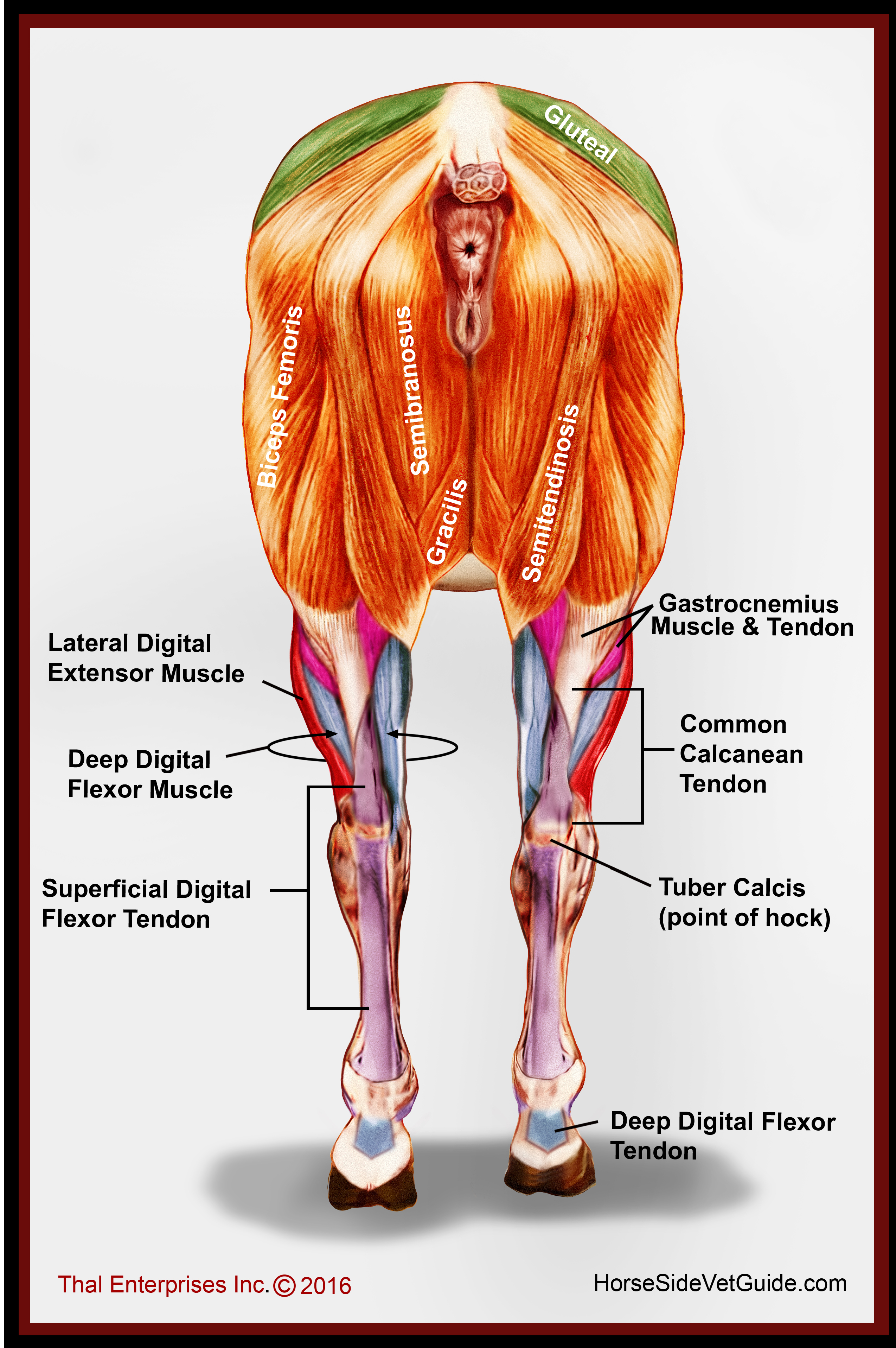
Database Record Viewer Horse Side Vet Guide
Chestnut (horse anatomy) The chestnut, also known as a night eye, [1] is a callosity on the body of a horse or other equine, found on the inner side of the leg above the knee on the foreleg and, if present, below the hock on the hind leg. It is believed to be a vestigial toe, and along with the ergot form the three toes of some other extinct.
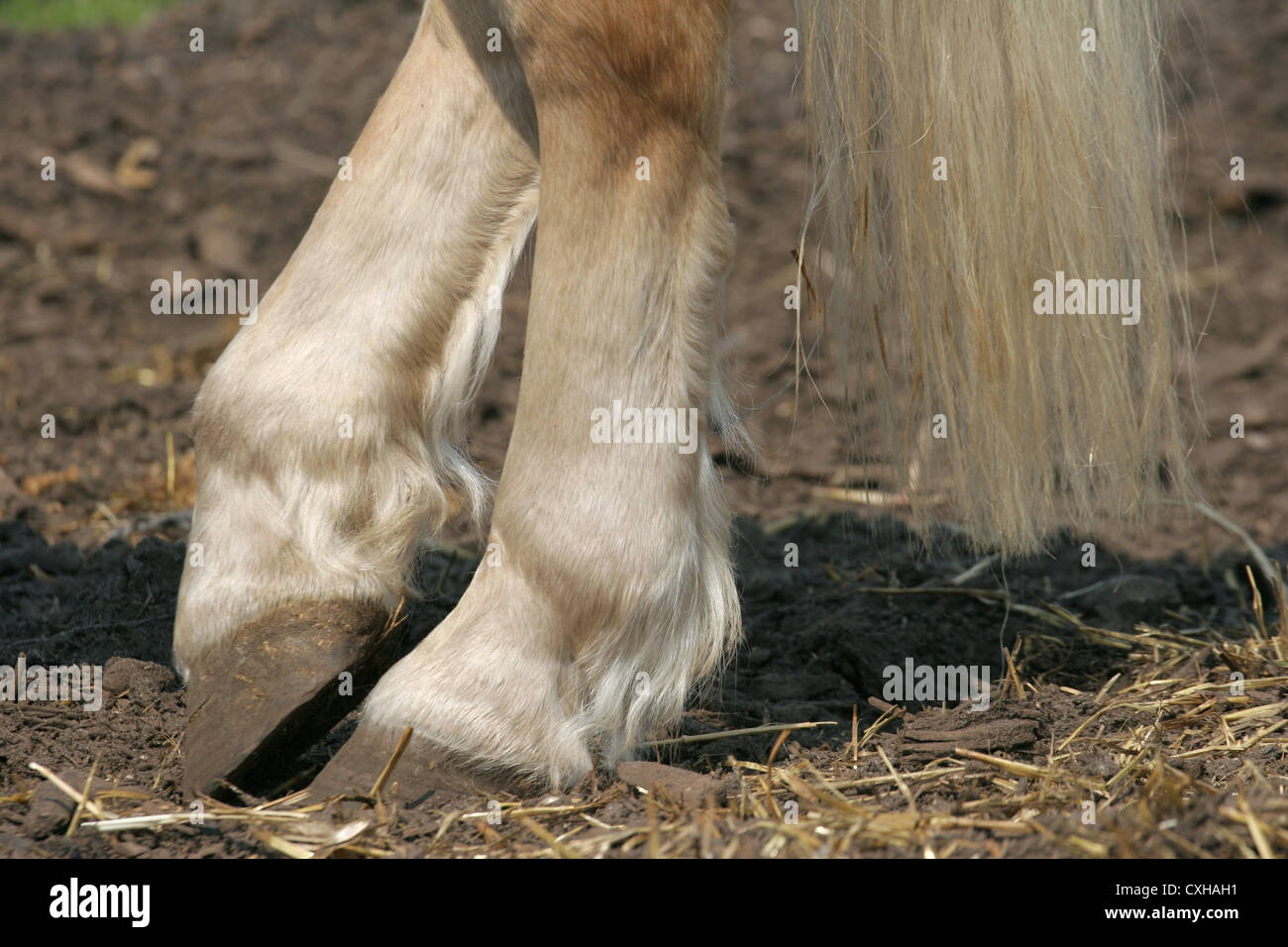
hind legs of horse Stock Photo Alamy
Parts of a horse on both the back and front legs. 32. Cannon bone and splint bone. The cannon bone is the large metacarpal below the knee (front) or the hock (back), and the splint bone is the small, bony pencil-like structure behind the cannon bone. These bones resemble the bones in our hands.

Quick Guide To Horse Leg Markings Horse markings, Horse care, Horses
Introduction The equine hind limb is also referred to as the pelvic hind limb. When working with horses, it is important to be able to accurately assess, diagnose and manage an equine patient. To do this, a good understanding of equine anatomy is essential. Anatomy
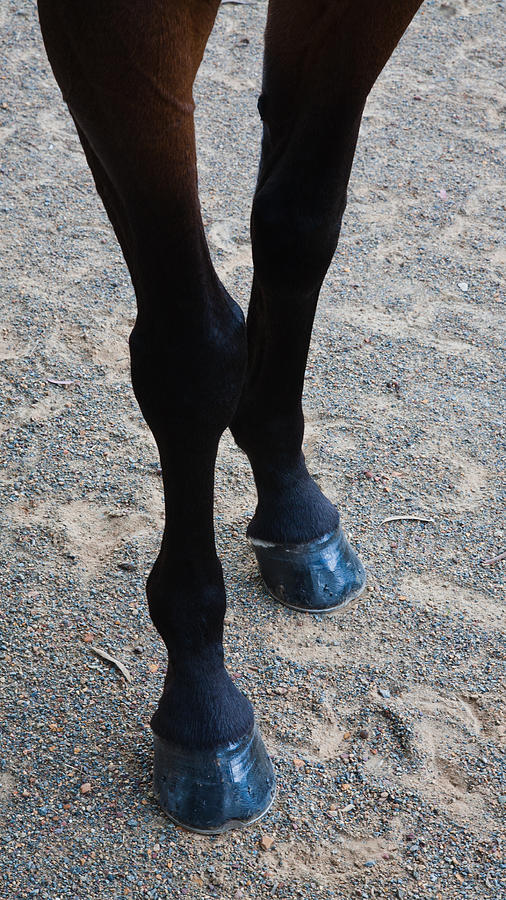
Horse Legs Photograph by Carole Hinding
What Are The Different Parts of A Horse's Leg? Horse Leg Anatomy - Upper Hind Legs #1 - The pelvis #2 - The Femur #3 - The Stifle #4 - The Fibula and Tibia #5 - The Hock Horse Leg Anatomy - Upper Forelegs #1 - Scapular #2 - The Humerus #3 - The Elbow #4 - The Radius and Ulna #5 - The Knee Horse Leg Anatomy - Lower Legs #1 - The Cannon Bone

Lameness, Severe, Cannot Support Weight on Limb Horse Side Vet Guide
Limbs of the horse Skeletal anatomy of a horse The limbs of the horse are structures made of dozens of bones, joints, muscles, tendons, and ligaments that support the weight of the equine body.

Legs of Horse in Movement. Close Up Stock Photo Image of movement, equine 42778144
The primary function of the front legs is to support most of the horse' s weight, absorb the shock of concussion, and lift the body for the flight phase of each stride. Strongest construction consists of relatively straight legs with sturdy bone structure, big flat knees, and well-shaped fetlock joints. Straightness
:max_bytes(150000):strip_icc()/stockings-58d91d713df78c5162d10342.jpg)
White Leg Markings on Horses
An abnormality in a horse's movement caused by pain or reduced range of motion. It is commonly used interchangeably with the term unsoundness since a "sound" horse is one that is not lame. Lameness or Unsoundness

Horse legs with hooves closeup Animal Stock Photos Creative Market
In summary, horse legs are made up of various apparatuses consisting of muscles, tendons, ligaments, and connective tissue. All of these devices work together to help stand, move, and protect from injuries to the horse legs. Unfortunately, often horses face health problems like tendon or ligament injuries. Although there is a bunch of different.
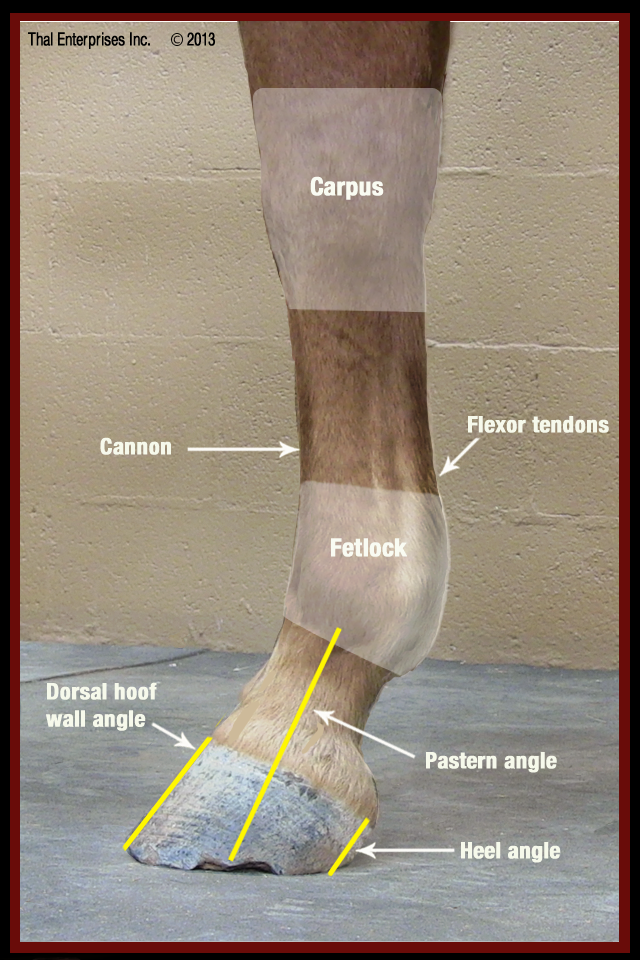
Horse Anatomy Reference Vitals & Anatomy upyourbutthealing
Tendons attach muscle to bone. When the muscle contracts force is applied to the bone through the tendon creating force which may be either static, as in the standing horse, or result in motion. Made of carefully arranged protein fibers, primarily collagen, tendons are elastic. As long as the elastic tendon is not over stretched it recovers to.
/GettyImages-200554179-001-5a15c93cda271500376f4638.jpg)
Hind Leg Problems in Horses Causes and Treatment
The line leading from Eohippus to the modern horse exhibits the following evolutionary trends: increase in size, reduction in the number of hooves, loss of the footpads, lengthening of the legs, fusion of the independent bones of the lower legs, elongation of the muzzle, increase in the size and complexity of the brain, and development of crested, high-crowned teeth suited to grazing.

Horse Health Helping your horse manage ringbone injury
The back transfers the force and driving power from the hind legs. A horse should have well-formed withers where the shoulder can attach to the rest of the body. The back should be one-third of the horse's length. Measure back length from the middle of the withers to the point of hip. A horse's back should be shorter than their underline.

Running Horse in the Desert Stock Photo Image of galloping, nature 18709594
Since a horse's legs are made up of a finely tuned system of bones and joints, ligaments and tendons, muscles and connective tissue designed to carry a relatively heavy body, good conformation coupled with healthy limbs is extremely important for proper function. Important parts of the horse's forelimbs
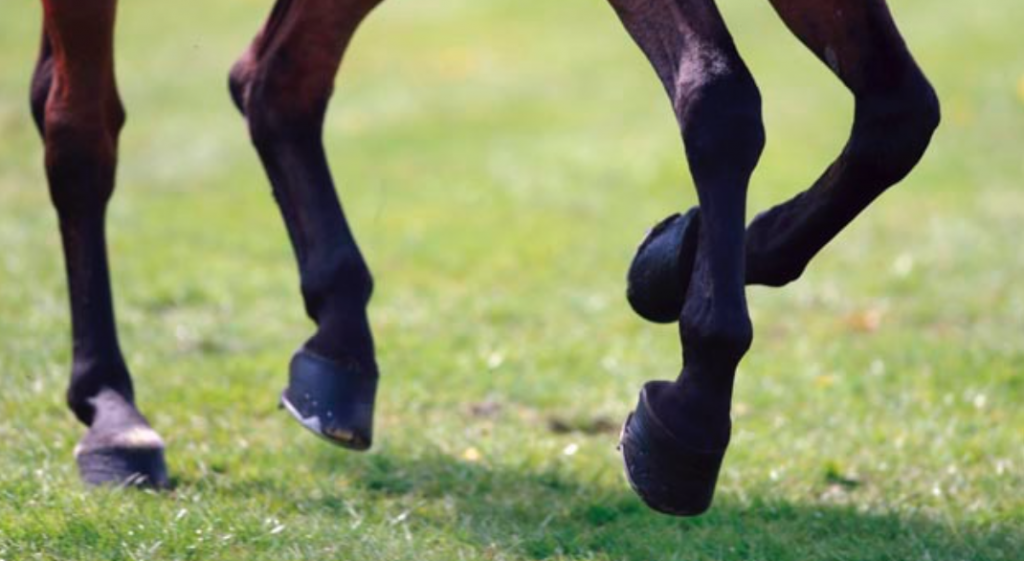
horse legs Archives LubriSynHA
Neck: The portion of the horse's body that is between the head and shoulders. Shoulder: The upper portion of the horse's front leg. Withers: The bony ridge at the base of the neck between the shoulder blades. This ridge is created by the top portion of the thoracic vertebrae. Horses are measured at the withers.

Horse Leg Anatomy Form and Function EquiMed Horse Health Matters
The horse's general form is characteristic of an animal of speed: the long leg bones pivot on pulley-like joints that restrict movement to the fore and aft, the limbs are levered to muscle masses in such a way as to provide the most efficient use of energy, and the compact body is supported permanently on the tips of the toes, allowing fuller ex.

Leg Conformation The Horse
Because a horse's legs are made up of a finely tuned system of bones and joints, ligaments and tendons, muscles and connective tissue designed to carry a relatively heavy body, good body conformation combined with healthy limbs is extremely important for proper function.
/low-section-of-horse-515042659-58d91b435f9b58468381b5ac.jpg)
White Leg Markings on Horses
Mammals Horse What's The Purpose of a Horse's Leg Chestnut? Advertisement Often called "night eyes," a horse's leg chestnut might seem unimportant now but it had a purpose years ago. Each one is unique, like a thumbprint, and grows continuously like fingernails.